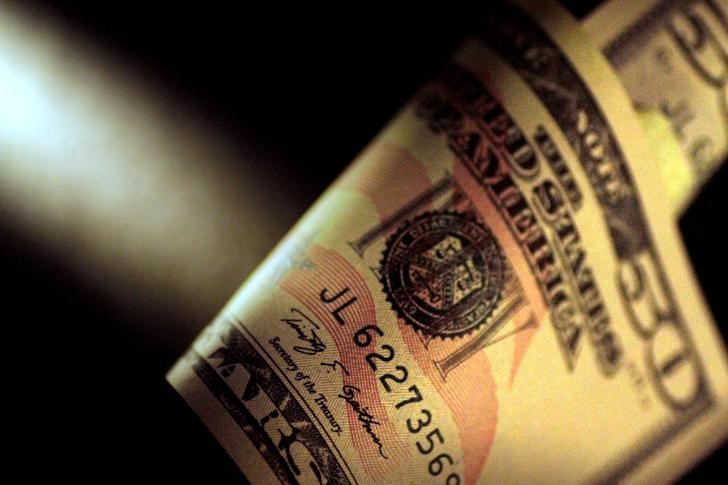By Peter Nurse
Investing.com - The dollar edged down in early European trade Monday, trading near three-month lows as confidence that the Federal Reserve was set to start tapering its bond-buying program in the near future ebbs away.
At 2:55 AM ET (0755 GMT), the Dollar Index, which tracks the greenback against a basket of six other currencies, was down 0.1% at 89.975, marginally above a three-month low of 89.646 set on Friday.
EUR/USD traded 0.1% higher at 1.2184, off a three-month high of 1.2245 touched on Wednesday, USD/JPY was 0.1% lower at 108.81, GBP/USD rose 0.1% to 1.4154, while the risk-sensitive AUD/USD was up 0.1% at 0.7737.
The greenback received a boost early last week after minutes from the meeting of the April Federal Reserve policy-setting meeting indicated that a number of policymakers wanted to discuss tapering bond purchase on worries that the considerable stimulus already pouring into an economy on the mend could stoke inflation.
However, traders have been gradually easing back bets on this tapering occurring promptly with Fed Chairman Jerome Powell repeating his view that it is not yet time to discuss a reduction in quantitative monetary easing.
“The weakness in the dollar owes a large part to a core of the Fed unhurried about the need to withdraw stimulus and recovery stories elsewhere in the world,” said analysts at ING, in a note.
With investors preoccupied with threats of accelerating inflation, U.S. PCE (personal consumption expenditures) data, due on Friday, is seen as one of the biggest tests for markets this week.
The core PCE, excluding food and energy, is the Fed's preferred inflation measure for its 2% flexible average target. It was up 1.8% in the 12 months to March, and further rises could test the Fed’s resolve to keep up asset purchases at their current pace.
Another data release that could influence the Fed is May’s advanced trade balance, also due on Friday.
“A $92bn deficit is expected. Yes that’s $92bn. That is quite a large hole to fill when the U.S. exceptionalism of the 2018-2020 period is being challenged by the overseas recovery and U.S. real rates remain very negative,” ING added.
Adding to the pressure on the dollar has been the recovery in the euro, bolstered by rising optimism about economic reopenings in Europe from coronavirus lockdowns.
Eurozone PMI figures, released late last week, showed a strong recovery in the region’s dominant services sector.
“After two quarters of contracting GDP, the second quarter of 2021 will likely show firm growth on the back of reopening economies and strong consumer demand,” ING said.
The EU leaders get together this week in a summit. The main point on the agenda is likely to be climate change, and this is unlikely to have much of an immediate market impact.
